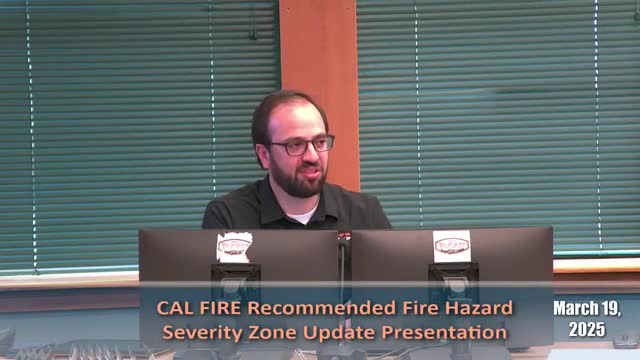Truckee Fire District updates defensible space ordinance to enhance wildfire mitigation efforts
March 20, 2025 | Truckee Town, Nevada County, California
Thanks to Scribe from Workplace AI and Family Portal , all articles about California are free for you to enjoy throughout 2025!

This article was created by AI using a video recording of the meeting. It summarizes the key points discussed, but for full details and context, please refer to the video of the full meeting. Link to Full Meeting
The discussion began with an emphasis on the importance of defensible space, a critical buffer zone designed to reduce the risk of fire reaching residential properties. Officials outlined the existing requirement for a 100-foot defensible space around homes, which is crucial for preventing ember intrusion. This space is divided into specific zones, each with tailored recommendations for homeowners. Zone 0, the area closest to the house, extends from 0 to 5 feet, while Zone 1 stretches from 5 to 30 feet, and the final zone reaches from 30 to 100 feet. Each zone has distinct guidelines aimed at minimizing fire risk.
As the conversation progressed, officials acknowledged that the new fire hazard maps would influence development in Truckee. The implications of these designations could affect what is permissible in areas classified as having very high fire severity. However, they reassured residents that many of the existing safety measures, including the Chapter 7A building code, were already in place and would continue to guide development practices.
The meeting also highlighted the proactive steps taken by Truckee Fire, which has been implementing real estate disclosures related to fire hazards since 2019. This initiative aims to inform potential homeowners about the risks associated with living in fire-prone areas. Furthermore, the town's safety element has been updated to incorporate wildfire considerations in environmental impact reviews, a practice that only became standard after 2017.
While the officials expressed confidence in the current regulations, they acknowledged the evolving landscape of land use planning and the need for ongoing community engagement. The conversation underscored the collective responsibility of residents and local authorities in mitigating wildfire risks. As one official noted, "It is a whole community effort," emphasizing that personal responsibility plays a vital role in enhancing safety.
Looking ahead, the town plans to continue refining its approach to wildfire mitigation, balancing state requirements with local needs. The officials are committed to fostering a culture of safety and preparedness, ensuring that Truckee remains resilient in the face of wildfire threats. As the meeting concluded, the message was clear: protecting the community from wildfires is not just a regulatory challenge but a shared mission that requires the involvement of every resident.
Converted from Truckee OES: Fire Hazard Severity Zones, March 19, 2025 meeting on March 20, 2025
Link to Full Meeting
Comments
View full meeting
This article is based on a recent meeting—watch the full video and explore the complete transcript for deeper insights into the discussion.
View full meeting